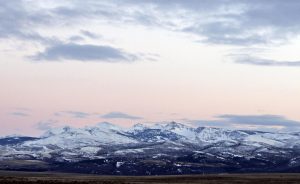
Good article from Patagonia’s web site . . .
The Badger-Two Medicine is sacred ancestral land of the Blackfeet Nation along the Rocky Mountain Front in northern Montana, just south of the Canadian border. Here, 8,000-foot limestone peaks notch the sky and pristine rivers cut through deep canyons before spilling out onto the rolling plains. These lands are home to the principal origin story of the Blackfeet people, who trace their creation to the headwaters of Badger Creek and Two Medicine River; and even today, one can still see the same sweeping vistas, find many of the same wild animals, such as grizzly bears, lynx, golden eagles and cutthroat trout, and hear the same sounds as those who lived here 10,000 years ago—as long as the Blackfeet people have been here. It’s home to the spiritual Medicine Grizzly and where tribal members still practice traditional ceremonies.
For years, the Blackfeet have been fighting to save the Badger-Two Medicine from the irreversible fate of development. And one tribal member, John Murray, 72, has spent the better part of his life protecting these lands from the threat of oil and gas extraction that’s hovered over them for nearly two decades—although attacks to Blackfeet homelands started long before that.
Blackfeet territory once spanned from present-day North Dakota, west to the Rocky Mountains, to the mouth of the Yellowstone River and up the Saskatchewan River to Lake Winnipeg, John begins. He is speaking to me from his office in Browning, Montana, (population just over 1,000) on the 1.5 million-acre Blackfeet Indian Reservation. His tone is measured, which puts listeners at ease, and gently commands full attention. John is a masterful storyteller, often bringing a tale in such a graceful circle that, after you’ve become so immersed in the story itself, you’re surprised to find he’s carried you back to the original point—and delivered you there with a much greater understanding than you had before. His desk is laden with mountains of paper, including the US Forest Service proposals and industrial projects on tribal land that require his immediate consultation. Outside, beyond Browning, winter melts from mountains that had been Blackfeet homelands for a geologic timespan that dwarfs rushed bureaucratic deadlines. “That was land that in our origins was what we called our world,” he says.